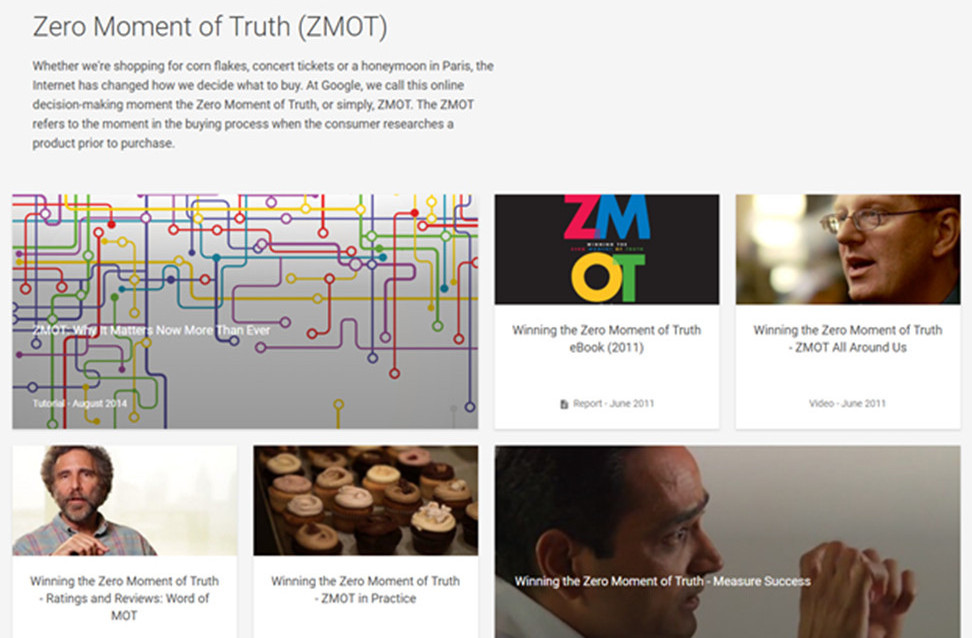
We don’t buy like we used to. And neither do your prospects. Ten years ago, we would make our buying decisions based on things like gut feel, word of mouth and price.
We visited shops and browsed. We chatted to our friends and found out what they had purchased or signed up for and what their experience was like. We compared prices by going to multiple shops and kicked ourselves when we found the same product or service (that we’d just purchased) elsewhere for cheaper.
Technology has changed everything about how we decide to buy
The internet has forever changed how we decide what and when to buy. We can browse the internet on multiple devices (at the same time even!).
Hungry and looking for a restaurant nearby? No problem – get on your mobile and look it up. Want to look for flights for your next trip but you’re stuck on a train? Grab your tablet and do a quick search. At the office and haven’t had time to do your grocery shopping? Open a tab on your desktop, select your favourite grocer and place your order.
We don’t want to make a bad decision that we’ll regret and we want to be confident about what we are buying. All the information that we need to make a buying decision can be found online.
“On average, 70% of the buying decision is made online before someone contacts a business for the first time”
– Chris Marr, Director & Founder of CMA
This figure is based on data generated by Google, who we can all agree are experts in the numbers game. They have all the data on how we search, find and use information to make informed buying decisions.
The research was done in 2011, but it’s still absolutely relevant today.
Your online brand presence is really important
Your potential buyer has doubts. Fears. Concerns about whether they will sign up with your firm or not.
As an accountancy firm, measurement of your online brand presence is an important step of the buying process. To defeat these doubts and fears of the prospect (which are absolutely valid in the sense that they don’t know you yet), you want to build confidence and trust.
If your brand doesn’t truly reflect who you are, your buyer will struggle to decide whether to work with you – and worse, may decide not to bother at all.
The period where people are doing all the research online before contacting the business for the first time has been named by Google as the ‘Zero Moment of Truth‘ (ZMOT). In their words, it is the “moment in the buying process when the consumer researches a product prior to purchase.”

How do you win your Zero Moment of Truth?
- Look at what questions and issues your clients and potential prospects have and create content that answers their questions and addresses their concerns. Not sure where to start with answering your clients’ questions? Read ‘They ask you answer’ from Marcus Sheridan now.
- Ask yourself: “Is my potential buyer seeing all the things they need to make a decision on my website, or are they getting this from my competitors?”
- Build a strong online brand presence by making sure that you are visible on all relevant marketing platforms and that your brand is clear and matches who you are and what you offer.
- Map out all the touchpoints that a potential buyer could go through when doing research on your brand, products and services.
Hang on…what are touchpoints?
‘“Touchpoint Guru” Hank Brigman defines a touchpoint as an influential action initiated by a communication, a human contact or a physical or sensory interaction. Each touchpoint is a message that literally “touches” a customer in some way. Collectively, touchpoints create the customer’s experience.’
Touchpoints help clients to build trust and to get a good idea of your brand and the type of services or products you offer. It includes many of the steps a potential buyer would take during the buyer journey.
So, what are the touchpoints that the buyer goes through before getting in touch with the business for the first time?
1. Browsing your website.
They need to be able to see who you are, what you do and who you help within the first 5 seconds of viewing your site.
2. Following you or your company on social
Your personal profile on social media is just as important as your company one. People want to connect with people. Get some more tips on your social accounts here
3. Signing up for or downloading free stuff e.g. a newsletter, guide or checklist
If they sign up for a newsletter, allow optional fields in the form to ask them more specific questions about what type of content they would like to receive e.g. events, tax tips, new services etc. Then tag them accordingly in your email management system. This enables you to really answer the questions your prospects have and to address any concerns they might have.
4. Listening to a live talk or joining a free webinar run by you or someone in your company
Even if the event is free, get all attendees to register so that you have their contact information. Post event marketing is just as important as pre event marketing (sometimes more important).
5. Attending an event that you run or are involved in
Whilst the tip for point 4 above is also valid for this one, I would also suggest that you provide all attendees with an easy way to remember you. Whether this is swag handouts or just a catchy flyer handout with one clear call to action, it will help keep you top of mind.
6. Reading your blogs on your website
Share all your blogs on social and tag any individuals or companies that are mentioned in the blog. You are likely to get more engagement this way as your blog may also get shown to their audiences. Attribute your blogs to the team member that wrote the blog. It shows your prospects and clients that you have a whole team of clearly knowledgeable, trusted individuals.
7. Reading or listening to video testimonials
If the testimonial is in text form, request an actual testimonial from your happy client. Don’t just write a case study and presume it will be as powerful. If the testimonial is in video form, interview your happy client so that people can see it’s a real person. You can also write questions or a basic script so you can be sure your client covers the areas you’d like them to. Don’t just keep the testimonials on a testimonial page on your website. Dot them all over your website on various pages and definitely share them on your social platforms (remember the 80-20 rule).
8. Watching demo videos on products and services that you offer
Make these short and simple with video captions. You want the viewer to see and feel how their lives will improve after using a product or experiencing a service.
9. Receiving emails or newsletters
Add a simple call-to-action in every email signature. Some prospects may not be following you on social or looking at your blogs regularly but if they have signed up to receive newsletters or similar, you have an opportunity to market to them each time you send an email/newsletter.
10. Looking at review sites
Research which review sites (Google reviews, Xero Marketplace, Facebook review) you are on and keep an eye on any reviews for your company, products and services. Try to respond as soon as possible to reviews and keep a positive, professional tone in all of your responses. Even negative reviews can be turned around with good engagement and a positive attitude.
What happens during the last 30% of the buying decision?
Following the 70%, your potential client has done their research and followed all but one step in the buying journey.
The last step is making contact with you or your firm to confirm their research.
They want to see if your online brand presence matches with you in real life. They want confirmation you really are able to offer all the things you’ve promised on your marketing platforms.
People reach out in different ways. In order to cover all the bases, have multiple options for them to contact you.
Some important touchpoints to make it easy for your prospect to finish the buying process are:
- A phone number and/or email address easily findable on your website (presuming this is how you prefer they get in touch)
- A website contact form (ideally explaining what will happen after they leave their details)
- An online booking application (like Calendly or AppointmentCore) enabling them to book a meeting slot with you at a convenient time
- Live chat on your website (with the option to leave a message if the team aren’t online)
- An active social media channel being monitored constantly for inbox messages
Think carefully about what’s important to your prospects as buyers, and think about the kind of process you follow when buying anything yourself! Then work hard at providing the same great buyer journey for your prospects.

